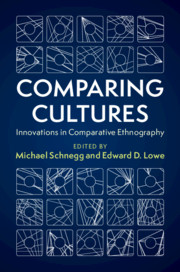Part III - Distant and Fluid Comparisons
Published online by Cambridge University Press: 08 May 2020
Summary

- Type
- Chapter
- Information
- Comparing CulturesInnovations in Comparative Ethnography, pp. 153 - 222Publisher: Cambridge University PressPrint publication year: 2020

